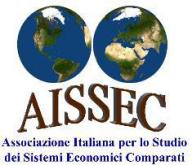By Giovanni Graziani[1]
The scope of the study is to measure the process of decoupling between the US and China as it appears in trade and foreign direct investments (FDI) flows through various pieces of evidence: official data on international trade and FDI, the behaviour and intentions of the firms involved as they show up from surveys, databases from various institutions, case studies and anecdotical evidence. The analysis spans through the period 2017-2023, with glimpses on the first eight months of 2024.
Through the appropriate indicators I try to quantify the supply-switching and export re-orientation taking place on both sides of the Pacific. As a whole, import dependency and export reliance show a decline for both contenders (that is, some decoupling is taking place). On the import side, if we look at commodity groups at a very high level of aggregation, we find that US import dependency on China has fallen in most of the 97 HS sectors at the 2-digit level. However, if we dig at a more disaggregated level, from the 4-digit to the 10-digit level, the picture appears to be more complex. Decoupling is not occurring uniformly but varies according to the different products. China lost market shares in all products hit by 25% US tariffs, and in many other products, either hit with lower tariffs or not hit with tariffs at all. But it does not materialize for many products not targeted by US protectionist policies, which even show an increase of dependency.
The decline in bilateral trade between the US and China has been offset by trade with other countries. The major role in market share gains were obtained by Mexico and Vietnam both in total US imports and also at the level of individual product groups. Other emerging countries have gained smaller market shares at least in a few products. The relative role and place for the various industrial sectors of the emerging countries are being dictated by their export specialization, factor intensities and trade agreements. On the US export side as well not all product groups behaved in the same way. Three out of the four major export manufacturing product groups at the 2-digit level showed a loss in the share of China in US exports to the world (US export reliance) more important than the average in total exports. As for China’s import dependency on the US, the pattern is that of a general reduction. China’s import dependency however might have declined even further at a more disaggregated level: such is the case for instance of its imports of some goods deemed of strategic importance by US policymakers.
On the other side, both China and the US seem to have re-directed a substantial amount of imports and exports away from each other in favour of alternative destinations, especially emerging countries like Mexico and Vietnam, and, at lower levels, of various Asian countries (apart from Europe and other developed countries that are not the object of the present research). Mexico has become the main source of imports and the main outlet for US goods. As for the second piece of evidence, the data shows that FDI flows in both directions have declined: those coming from China went even negative as from 2020. On the contrary, FDI flows remained sustained towards the rest of the world, in particular towards some emerging countries. The percentage increase of US outward FDI stock towards Vietnam and Mexico was more than the double compared to the one directed to China. On the other side, in 2023 China turned for the first time into a capital exporter country.
Unlike in the past, most of the Chinese outward FDI went to emerging countries. The third piece of evidence on decoupling comes from the actions and the intentions of firms, mostly Multinational Enterprises (MNEs). Here no complete set of data exist. We have to rely on surveys, case studies, anecdotical evidence, MNEs’ callings and the like. A trend away from China-based sourcing had already begun in the 2000s, when companies started to adopt “China+1” sourcing, as China started looking less attractive relative to other Asian countries and countries like Mexico. For the first time in about 25 years, China is not a top three investment priority for a majority of firms from the US and from many other investor countries. Some anecdotical evidence of firms shifting away from China is presented, alongside the actions of China’s multinationals joining the race. Earnings conference calls conducted by listed firms speak more and more frequently of potential shifts in offshoring arrangements away from China.
In order to diversify their supply chains away from China many companies have decided to invest elsewhere, in particular in a process of nearshoring. Many US firms have increased their announcing of nearshoring. A large part of this nearshoring FDI to Mexico has been made by Chinese companies. In order to gauge more precisely the real extent of decoupling we discuss further the question whether some emerging countries function as a backdoor to the US market, in particular Mexico and Vietnam. Some correlations between trade and FDI flows in the trilateral relationship among the US, China and those emerging countries, plus some anecdotical evidence, are at best suggestive that they operate as such, but, unfortunately, cannot offer a precise measure of their impact on decoupling.
One can only safely say that US actual dependency on China is possibly larger than it appears and, conversely, the process of decoupling might be milder than generally thought. A portion of disguised dependency may be due to the ties created through some emerging countries functioning as a backdoor to the US market. Unfortunately, these are not easily quantifiable. Finally, we remind that the decision to completely or partially leave China through shutting subsidiaries still remains a difficult choice for many multinational enterprises. Despite its rising labour costs, China continues to be competitive under many aspects. US import dependency on Chinese products remains high in several sectors. On the whole, the main ingredients of the “economic embrace” between the two superpowers appear to be still in place.
[1] Professor of Economics of European Integration at the University of Parma and at LIUC-Università Cattaneo,









